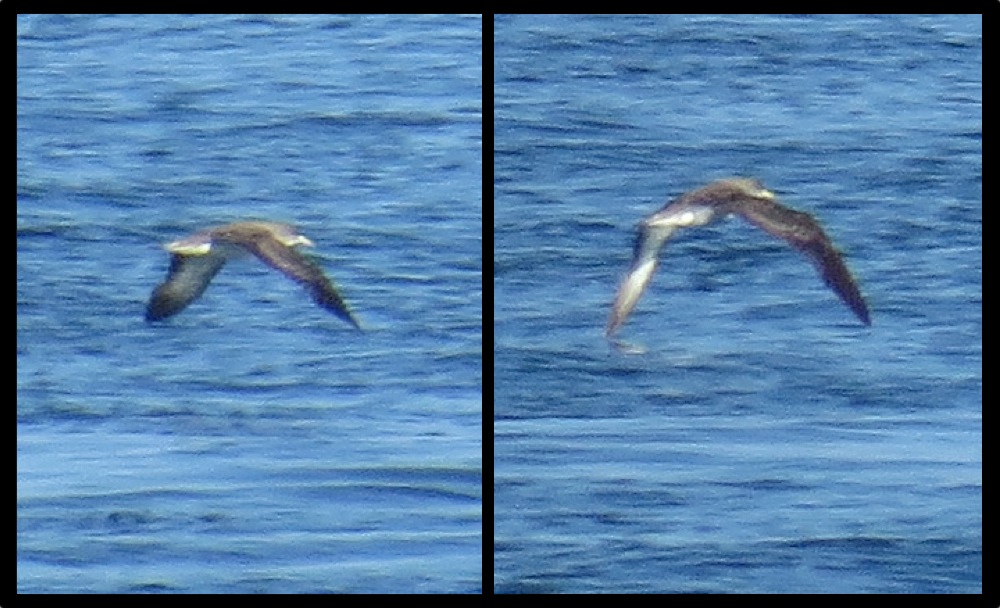If you keep up on the news of subspecies, you will have heard of Scopoli’s Shearwater. It’s the Mediterranean breeding population of Cory’s Shearwater, overlapping very little with populations nesting on Atlantic Islands, and many authorities have split the two into separate species recently. Both populations occur off the Atlantic coast of North America, although Cory’s in the limited sense (subspecies borealis) is far more numerous. Scopoli’s (subspecies diomedea) is most numerous off the coast of North Carolina, where it may account for 10% or more of the Cory’s-type shearwaters seen there (Howell 2012), but this subspecies appears to be almost completely absent in the colder waters north of the Gulf Stream (e.g. New York and New England)
The summer and fall of 2015 have been remarkable for the number and visibility of Cory’s Shearwaters in the northeast, and I’ve had several opportunities to see lots of shearwaters and to look for Scopoli’s (without finding any) both from land and from boats.
Scopoli’s averages slightly smaller, and smaller-billed, but the key distinguishing feature is that it shows more white on the underwing at the base of the primaries.
What I have learned this year, not surprisingly, is that confirming the extent of white on the underwing is extremely difficult under field conditions (with binoculars, that is – a camera allows more detailed inspection). It requires very close and extended viewing in good light. Changing lighting, and the nature of the flight of shearwaters, can dramatically alter the impression of white on the underwing, especially at a distance.

Because of the way lighting can create the illusion of white on the primaries, it is much easier to confirm the sharply bicolored pattern of subspecies borealis. Any bird that shows white coverts and dark primaries can only be borealis, but a bird that appears to have more white (like Scopoli’s diomedea) is often just a borealis catching the light, and it will require better views to be sure that the feathers there are actually white. There is no doubt that Scopoli’s is a rare bird north of the Gulf Stream, and any records should be carefully documented, but there may also be a bias to overlook this subspecies. We are more likely to confidently identify borealis, while most birds that look like possible diomedea will never be seen well enough to be certain.
Further Reading
Howell, S. N. G.. 2012. Petrels, Albatrosses and Storm-Petrels of North America: A Photographic Guide. Princeton University Press, Princeton, NJ


Pingback: Blog Birding #246 « ABA Blog
At the recent World Seabird Conference in Cape Town, lots of interesting studies on Cory’s and Scopoli’s Shearwaters. It appears that the true Cory’s population has 6 distinct wintering regions all around around the Atlantic Ocean and juveniles will visit each of these before becoming mature. Even when adult, a bird will occasionally and for no apparent (or at least no known or predicable reason) switch wintering region (eg North Atlantic to waters off Brazil).
Scopoli’s seem to have a rather more limited distribution with most wintering off West Africa although I’ve seen them off N.Carolina as mentioned.